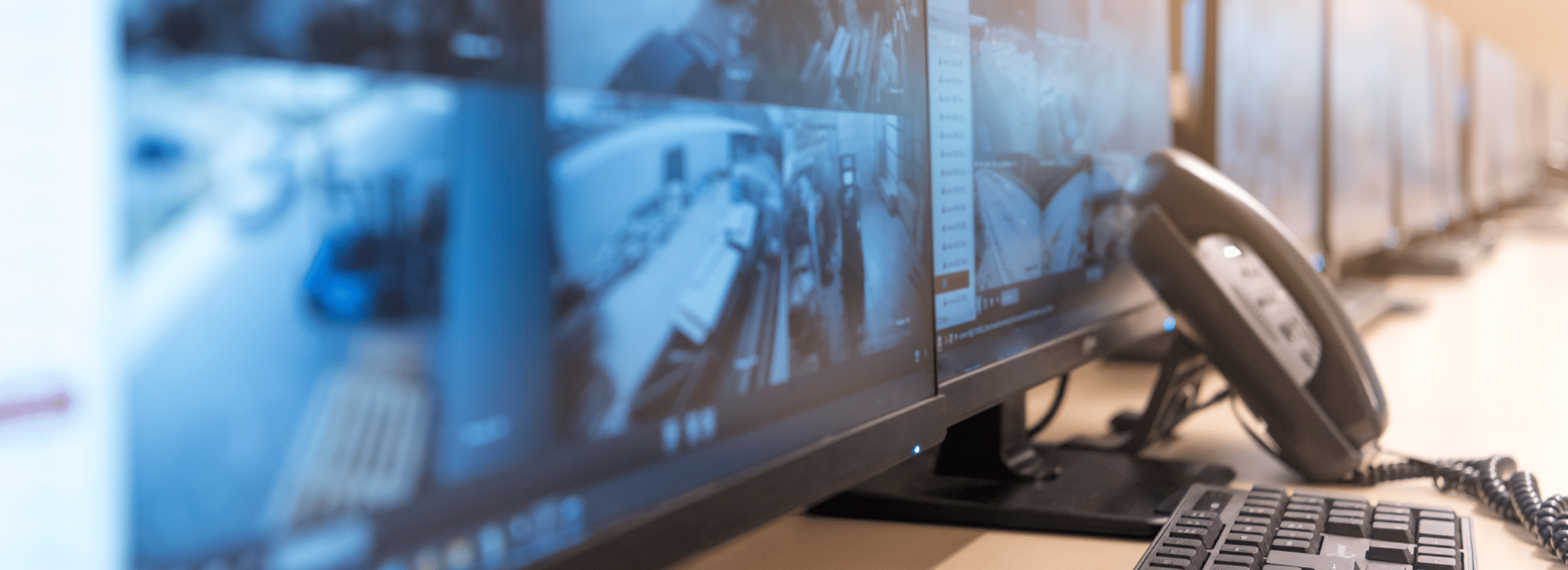The National Safety Council estimates work injuries in 2019 cost $171 billion in medical expenses, productivity loss, and administrative costs. In the same year, 105 million days were lost due to injuries with 70 million occurring in 2019. The rest occurred in previous years and carried over.
Companies have a responsibility to create a safe environment. To ensure the safety of employees and visitors, every office building, automotive dealership, commercial property, construction site, warehouse, and apartment building must have controls in place. If they don’t, they could pay a high price for workplace injuries. Additionally, with the pandemic continuing after almost two years, it drives the need to put more processes in place to keep workers safe.
The U.S. Bureau of Labor Statistics states the use of surveillance cameras grew almost 50 percent from 2015 to 2018. They expect to see a 21 percent increase this year. Clearly, security is a high priority for many businesses. That’s why they install security cameras around the property to watch the inside and outside of the property. It’s equally important to have eyes on the parking lot, all entrances and exits, and any areas with equipment and inventory.
Having security cameras is a good start, but there’s room for improvement. It turns out many video surveillance systems have no one monitoring the cameras.
Video surveillance with remote monitoring can do much more than stand-alone security cameras and alarm systems can. Video analytics and a trained monitoring operator watch for threats that occur inside and outside around the perimeter. They play a critical role in safety, crime prevention, and operations. Besides, the pandemic reinforces the need for security cameras to keep the public medically safe. After all, they are contactless.
The Price of Noncompliance and Crimes
Why the increase in video surveillance? For one, many workers do not follow personal protection equipment recommendations. Either they don’t wear PPE or they wear it incorrectly. Unfortunately, EHS Today references a study by Kimberly-Clark Professional that reveals 98 percent of respondents said they have observed workers not wearing PPE when they should have been. It happens often.
Workers aren’t wearing head protection, eye protection, or any protective gear. It turns out a high number of workers who have been injured did not wear the correct protection at the time of the injury. A California Polytechnic State University research paper references distressing data from the Environmental Health and Safety department of New York University.
“The report stated that ‘hard hats were worn by only 16% of those workers who sustained head injuries; only 1% of approximately 770 workers suffering face injuries were wearing face protection; only 23% of the workers with foot injuries wore safety shoes or boots; about 40% of the workers with eye injuries wore eye protective equipment.'”
This is a big problem for construction sites, warehouses, and many other businesses.
Safety isn’t the only problem. The FBI Crime Explorer shows property crimes far exceed violent crimes. A property crime may involve motor vehicle theft, arson, larceny-theft, or burglary. On average, almost 4,500 property crimes have taken place on the street, sidewalk alley, or highway. In 2019, 7,000 property crimes took place in parking lots every week! It sounds scarier when you realize this is 1,000 property crimes per day.
Property crimes have a higher price tag than the costs of repairing damage or replacing items. It comes with other expenses such as medical bills, lost wages, number of days of missed work, pain and suffering, and others. The previously mentioned NSC data confirms this. Additionally, worker injuries can cause financial hardship for the workers, their families, and their employer.
Here are four ways to enhance workplace safety and security.
1. Do a Safety and Security Risk Assessment
It’s wise to hire a security consultant to do the assessment. They know how to do the process quickly and efficiently. They won’t miss anything. Non-security pros who attempt to do a risk assessment can end up costing the company more.
A safety and security risk assessment identifies the strengths and weaknesses in your physical security and safety protocols. In doing the risk assessment, you’ll study the movement of people and workers around the property. Is it workers? Visitors? Customers? Vendors? Delivery? What’s the process for entering and exiting the building for each role?
Check all entrances and exits. Are there any barriers? What about the flooring? Is it a tripping hazard? How do vehicles move around the property? This helps prevent pedestrian injuries.
The assessment involves an analysis of the property for vulnerabilities such as internal and external theft, trespassing, vandalism, safety, and other issues. For example, the assessment will evaluate the interior and exterior lighting. Is it the right kind of lighting? Is there enough lighting? What about the lighting on the sidewalks, parking lot, and stairwells? Lighting can have a huge impact on safety.
It’s also valuable to have a map of the property’s layout and identify current security and safety measures. This will help locate gaps in security.
2. Create and Communicate Your Health and Safety Policy
The assessment will give you the information you need for documenting your health and safety policy. This contains safety requirements and protocols. Processes and policies are only as good as the people who follow them. Creating a health and safety policy is the first step. The next step is to follow it and stay vigilant.
That’s why it’s critical to hold safety and security training. Employees need to sign off on the training indicating they attended and will follow the processes. Companies with the best safety and security records hold regular security and safety training sessions.
3. Follow OSHA’s Safety Recommendations
The U.S. Department of Labor Occupational Safety and Health Administration (OSHA) has a useful guide on recommended practices for safety and health programs. Following these recommendations will help prevent workplace injuries, illnesses, and death.
The guide helps you get started with a basic program and simple goals. Once you achieve that, you’ll be able to move on to the next steps to high levels of safety. It’s a good idea to incorporate this into the health and safety policy.
4. Monitor the Property for Health and Safety Hazards
Remote video surveillance that combines video analytics and trained monitoring operators can proactively watch for potential safety violations. The system can look for trends in PPE use and the following of safety protocols. A video surveillance system records everything the cameras see. It can be a valuable tool in training workers on proper PPE use and safety protocols.
With workers and visitors coming and going every day, it won’t take much for new hazards to appear. Video surveillance will help catch problems quickly and alert the monitoring operator. The operator can reach out to the on-site contact to report hazards and problems before something happens.
Closing Safety and Security Gaps with Security Cameras
While remote video surveillance closes many safety and security gaps, it cannot do it by itself. Any company that claims their security system will solve all their security and safety problems isn’t being truthful. The best approach to safety and security is to add multiple layers of physical security.
A good explanation of the effectiveness of layered security comes from the Loss Prevention Certification Board (LPCB) RedBookLive. LPCB sets the standards to ensure the effectiveness of security products. They say effective layer security consists of three elements: detect, response, and delay:
“It is therefore always important to ensure suitable physical security measures are in place and that those measures provide sufficient delay to enable the intruder to be detected and a suitable response mounted in order to apprehend the intruder.”
In other words, multi-layered security with these three components increases hardiness. Video security cameras with remote surveillance and video analytics contain all three. You’re combining the advantages of technology and human intelligence to optimize security and safety.
Watching the monitors for hours can easily cause anyone to tune out. Video analytics adds the needed support in monitoring the property. As soon as the analytics notice something, it alerts the trained monitoring operator who can take proper action.
Multi-layered perimeter security may involve some or all of the following:
- Video surveillance
- Access control system
- Lighting
- Fencing or gates
You can further enhance the effectiveness by integrating all of the security technologies to an integrated security system. This simplifies management, automates the right processes, and fortifies security.
An integrated security system may contain some or all these:
- Video cameras
- Remote monitoring
- Video analytics
- Audio warning speaker
- Access control system
An example of integration is combining video surveillance cameras with an access control system. This lets you match the time stamp on the access control with the video. It can save you a lot of time.
Here’s what happens when there’s no integration. A manager notices an employee accessed a secured room at a specific time. This employee does not have the authorization to enter this room. Finding the associated video footage without an integrated security system will take longer. An analyst will have to search hours of videos to locate the footage for the exact time and date of the incident. A unified security system skips this part and saves hours.
Choosing the Right Security System
You can implement a remote video surveillance system by working with a security company that specializes in these systems. They may have a turnkey system that allows them to manage the entire process. They can install the security cameras, verify the cameras work, monitor them from a location away from your property, and conduct system health checks to ensure they still work at optimal levels.
The right-sized security solution depends on your needs. It’s challenging to determine the return on security investment (ROSI). Besides, you cannot put a number on the cost of peace of mind for workers, customers, visitors, and vendors. You can avoid bad publicity from crimes and injuries that happen at a place of business. You can’t put a price tag on that.
Security companies that get results do so by customizing the security camera system for your business. To learn more security camera technology and its ROI, check out this free guide on Remote Video Surveillance: More Than Just Catching Criminals.

